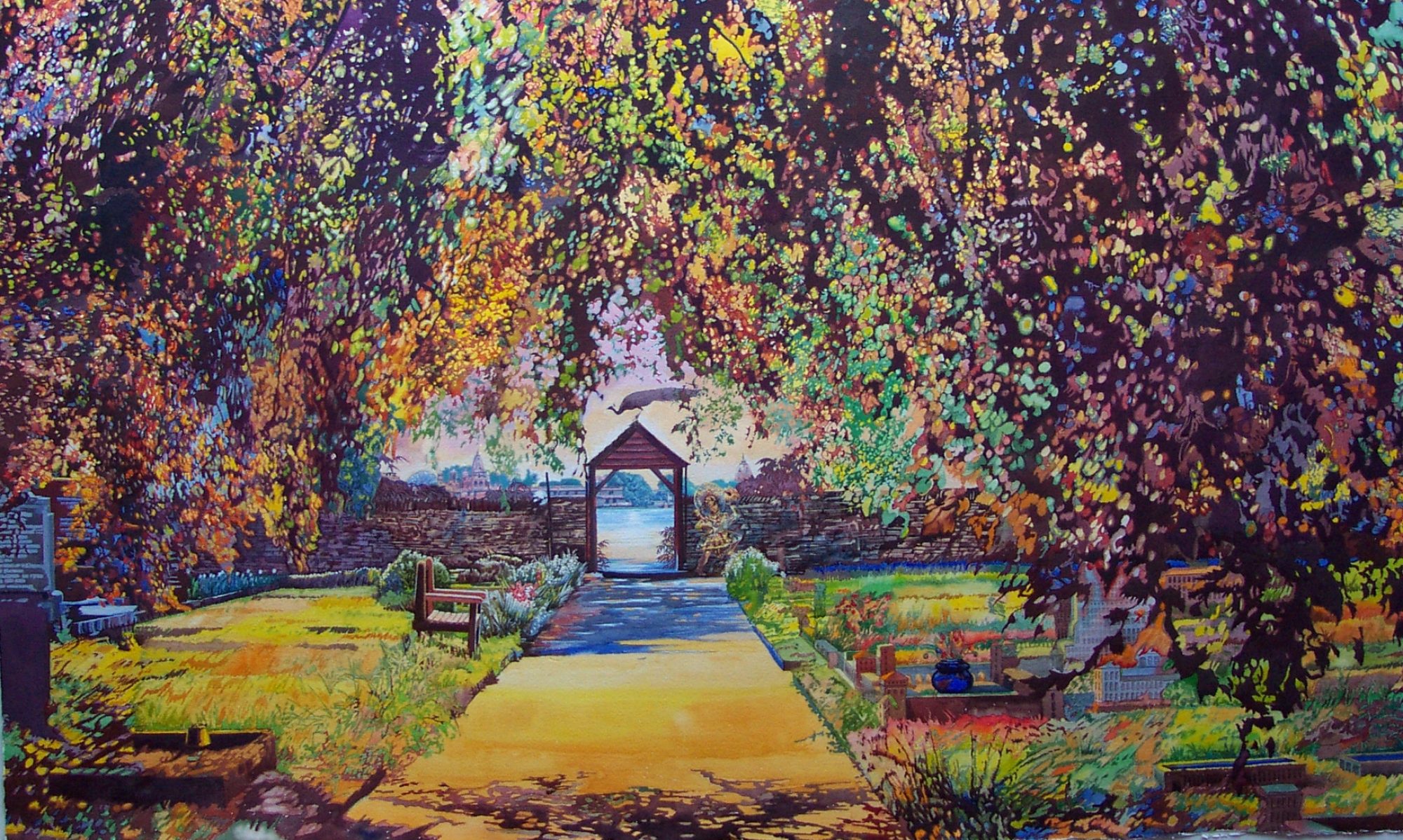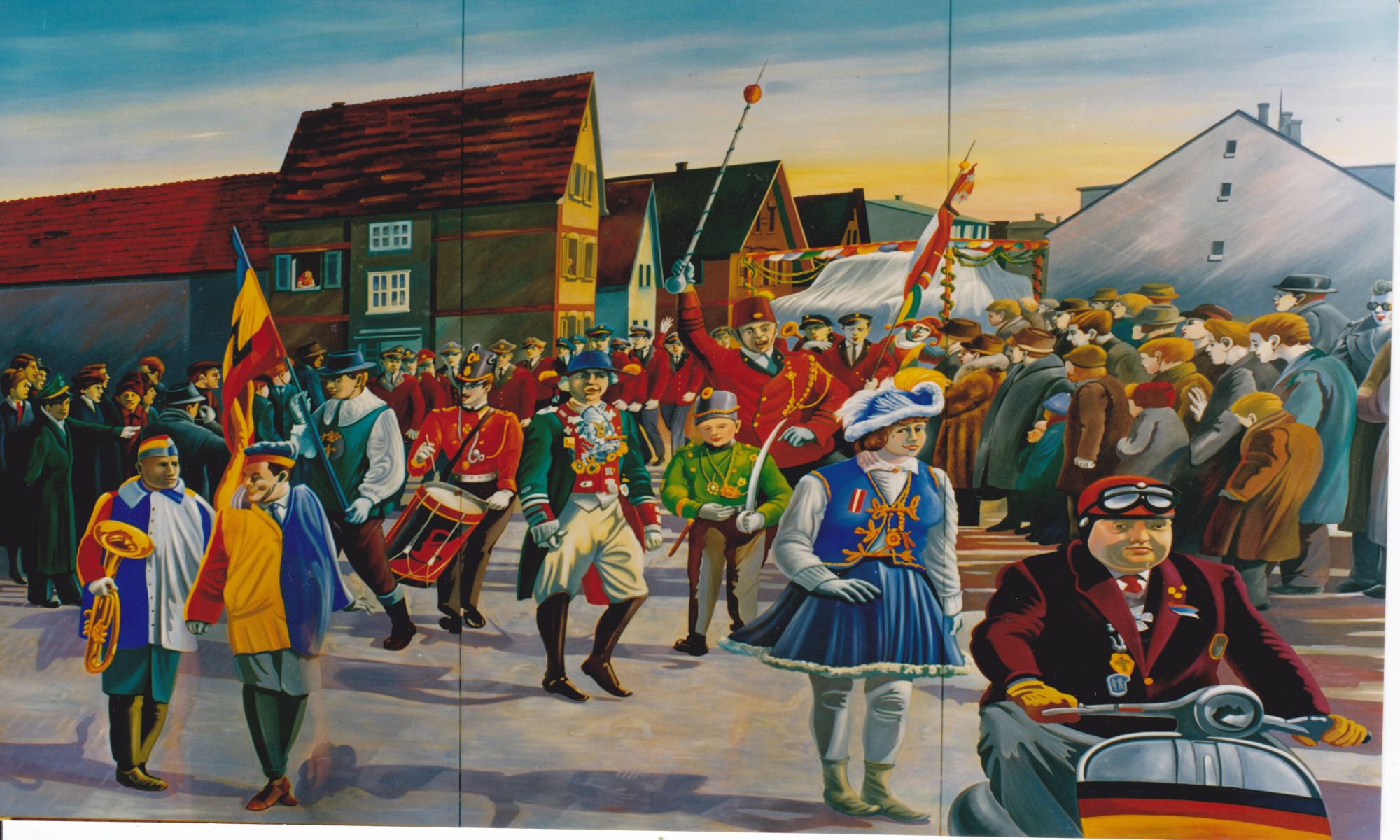Hans Diebschlag’s controversial painting has been returned home and is once more hanging in Rüsselsheim’s Town Hall.
The event was reported in the press with a photogragh of the re-hanging of the painting, follow this link to read the article in German. Below is an English translation of the press article.
The artwork “We Love The Marching” by Hans Diebschlag was on loan to the Military History Museum of the Bundeswehr. Now it returns to its traditional place in the Rüsselsheim town hall.
The painting “We Love The Marching” by Hans Diebschlag returns to its place in the city of Rüsselsheim after being loaned to the Military History Museum of the Federal Armed Forces (MHM) in Dresden. The three-part, 5.13 meters wide and three meters high oil painting was installed yesterday in the course of the morning by the art logisticians of the company DB Schenker-Art back in the historic meeting room of the town hall.
The painting was created during the Rüsselsheim Cultural Summer in 1992. The artist Hans Diebschlag, who died in 2014 and spent his childhood and youth in Rüsselsheim, made it in dialogue with citizens in an open studio in the Rüsselsheim park school. With the presentation of the lynching of 1944 as a carnival parade, Hans Diebschlag triggered a broad social debate in Rüsselsheim. Until the end of last year, the painting was part of an exhibition project on “Male War – Female Peace? Violence and Gender “.
“I am pleased that the painting has arrived safely in the Rüsselsheim Town Hall,” says Mayor and Cultural Affairs Dennis Grieser (Green Party). “Because the Diebschlag painting is an important testimony to the reappraisal of a dark phase of the city’s history.”
As all those familiar with the story behind this painting and the controversy it sparked well know that Hans did not represent the lynching as a carnival, he painted a carnival scene but upon learning of the events that occurred on the very street he had depicted he subsequently made reference to them in the painting. A subtle but significant difference.
As Hans wrote in 2014 in reply to an enquiry through his website ” I had a commission in 1992 from the Rüsselsheim town council. I discovered photos of Carnival marching bands in Rüsselsheim in my father’s slide collection. I was painting in my temporary studio in the Parkschule in Rüsselsheim and was nearly finished when I was visited by an old bag lady who started the conversation by asking if I knew what had happened in that street. I did not and she started to relate the events of the lynching of the American POW airmen. Further investigations by friends, Dagmar Eichhorn, August Nigro and film maker Thomas Frickel, gave us a fuller and complex picture of the events in 1944. With this fuller picture of events I completed my painting by incorporating the shadows of the airmen. In addition I painted the Jewish star onto the shadow figures to commemorate the brutalities of the war.”
The painting may be viewed by asking at the town hall although access will not always be possible if the room is in use.

